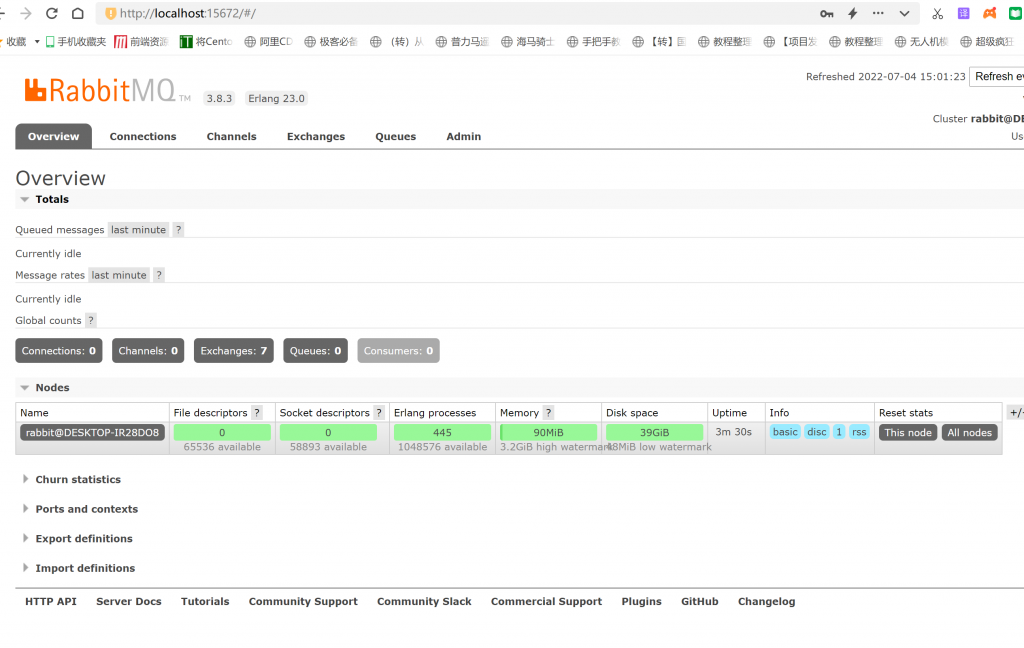1、先在pom.xml中引入如下依赖:
<!--Netflix Eureka依赖-->
<dependency>
<groupId>org.springframework.cloud</groupId>
<artifactId>spring-cloud-starter-netflix-eureka-client</artifactId>
</dependency>
<dependency>
<groupId>org.springframework.cloud</groupId>
<artifactId>spring-cloud-starter-netflix-ribbon</artifactId>
</dependency>
<!--springcloud整合的openFeign-->
<dependency>
<groupId>org.springframework.cloud</groupId>
<artifactId>spring-cloud-starter-openfeign</artifactId>
</dependency>
2、在pom.xml中的<project></project>之间增加以下关于springcloud的版本管理:
<dependencyManagement>
<dependencies>
<dependency>
<groupId>org.springframework.cloud</groupId>
<artifactId>spring-cloud-dependencies</artifactId>
<version>${spring-cloud.version}</version>
<type>pom</type>
<scope>import</scope>
</dependency>
</dependencies>
</dependencyManagement>
3、在application.propertites中增加如下配置:
#feign的配置,连接超时及读取超时配置
feign.client.config.default.connectTimeout=5000
feign.client.config.default.readTimeout=5000
feign.client.config.default.loggerLevel=basic
#开启熔断功能
feign.hystrix.enabled=true
4、在application启动入口增加@EnableFeignClients注解:
@EnableFeignClients
@ImportResource("classpath:hibernate.xml")
@SpringBootApplication
public class Zero4jApplication extends SpringBootServletInitializer{
@Override
protected SpringApplicationBuilder configure(SpringApplicationBuilder builder) {
return builder.sources(Zero4jApplication.class);
}
public static void main(String[] args) {
SpringApplication.run(Zero4jApplication.class, args);
}
}
5、创建FeignClient客户端:
package com.zero4j.controller.api.v1;
import org.springframework.cloud.openfeign.FeignClient;
import org.springframework.web.bind.annotation.DeleteMapping;
import org.springframework.web.bind.annotation.GetMapping;
import org.springframework.web.bind.annotation.PatchMapping;
import org.springframework.web.bind.annotation.PathVariable;
import org.springframework.web.bind.annotation.PostMapping;
import org.springframework.web.bind.annotation.RequestParam;
@FeignClient(value="zero4j-provider-area", fallback=AreasApiHystrixV1.class)
public interface AreasApiFeignClientV1 {
@PatchMapping(value="api/v1/areas/{id}")
String update(
@PathVariable(value="id") String id,
@RequestParam(value="token",required=false) String token,
@RequestParam(value="name",required=false) String name,
@RequestParam(value="parentId",required=false) String parentId,
@RequestParam(value="hasChildren",required=false) Boolean hasChildren
);
}
6、编写调用微服务的Controller:
package com.zero4j.controller.api.v1;
import java.util.HashMap;
import java.util.Map;
import javax.servlet.http.HttpServletRequest;
import javax.servlet.http.HttpServletResponse;
import net.sf.json.JSONObject;
import org.hibernate.SessionFactory;
import org.springframework.beans.factory.annotation.Autowired;
import org.springframework.http.HttpEntity;
import org.springframework.http.HttpHeaders;
import org.springframework.http.HttpMethod;
import org.springframework.http.MediaType;
import org.springframework.http.ResponseEntity;
import org.springframework.web.bind.annotation.DeleteMapping;
import org.springframework.web.bind.annotation.GetMapping;
import org.springframework.web.bind.annotation.PatchMapping;
import org.springframework.web.bind.annotation.PathVariable;
import org.springframework.web.bind.annotation.PostMapping;
import org.springframework.web.bind.annotation.RequestAttribute;
import org.springframework.web.bind.annotation.RequestMapping;
import org.springframework.web.bind.annotation.RequestParam;
import org.springframework.web.bind.annotation.RestController;
import org.springframework.web.client.RestTemplate;
import com.zero4j.model.area.service.AreaService;
@RestController
@RequestMapping("/api/v1/areas")
public class AreasApiControllerV1 {
@Autowired
private AreaService areaService;
@Autowired
private SessionFactory sessionFactory;
@Autowired
private RestTemplate restTemplate;
@PatchMapping(value="/{id}")
public ResponseEntity update(HttpServletRequest request,HttpServletResponse response,
@PathVariable(value="id") String id,
@RequestParam(required=false) String token,
@RequestParam(required=false) String name,
@RequestParam(required=false) String parentId,
@RequestParam(required=false) Boolean hasChildren
){
return ResponseEntity.ok((String)areaApiFeignClient.update(id,token,name,parentId,hasChildren));
}
}
7、编写熔断处理方法:
package com.zero4j.controller.api.v1;
import net.sf.json.JSONObject;
import org.springframework.stereotype.Component;
@Component
public class AreasApiHystrixV1 implements AreasApiFeignClientV1 {
@Override
public String update(String id, String token, String name, String parentId, Boolean hasChildren) {
JSONObject out = new JSONObject();
out.put("status", 400);
out.put("message", "update服务异常");
out.put("debug", "update服务异常");
return out.toString();
}
}
8、启动服务,访问对应的api,分别在微服务开启、关闭的时候调用API,查看结果即可。



